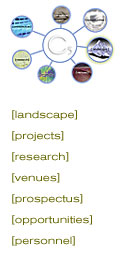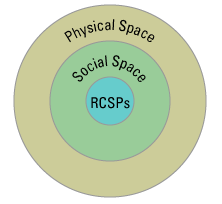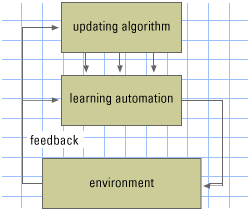Two types of category learning should be distinguished. Fixed space category learning occurs when new categorizations are
representable with the available feature set. Flexible space category learning occurs when new categorizations cannot be represented with
the features available. Whether fixed or flexible, learning depends on the featural contrasts and similarities between the new category to be represented and the individual's existing concepts.
Behavioral and Brain Sciences (1998) 21, 1-54, Philippe G. Schyns, Robert L. Goldstone, Jean-Pierre Thibaut
Methodology
In employing adaptive learning theory as set forth in the theory of flexible feature learning together with theories of environmental hermeneutics and proxemics,
this experiment will determine the behavior of multiple autonomous surveillance probes in order to generate data from a multidimensional environment and in doing so
provide a multifarious description of the given environment.
1. The five RCSP human controllers (agents) are organized to not be organized in any specific manner but are autonomous agents controlling their
individual cars according to an individualized rule set. Each controller/RCSP is enabled with its individualized "vocabulary", i.e. what it
recognizes.
2. The intention is to describe the multiple dimensions of a given environment where each RCSP has the opportunity to receive the same stimuli,
but through its individualized filtering process it collects different stimuli, and/or perceives the same stimuli differently.
3. Together the stimuli, physical properties, to which the organism is sensitive define a multideminsional space. The space is defined by just
those physical dimensions that are important to the organism.
4. Dependent on project goal (what is to be described), different perceptual capabilities are attributed to the various RCSPs. Though a project
goal isn't necessary but is allowed to emerge.
5. Some behavior makes sense in terms of the events that preceed it; other behavior makes more sense in terms of the events that follow it.
Reflexes are behavior of the first kind. Operant behavior is guided by its consequences where operant refers to an essential property of a
goal directed behavior: that it have some effect on the environment.
6. Behavior is guided in some way by the discrepancy between the present state of affairs and some often unknown ideal state.
|


